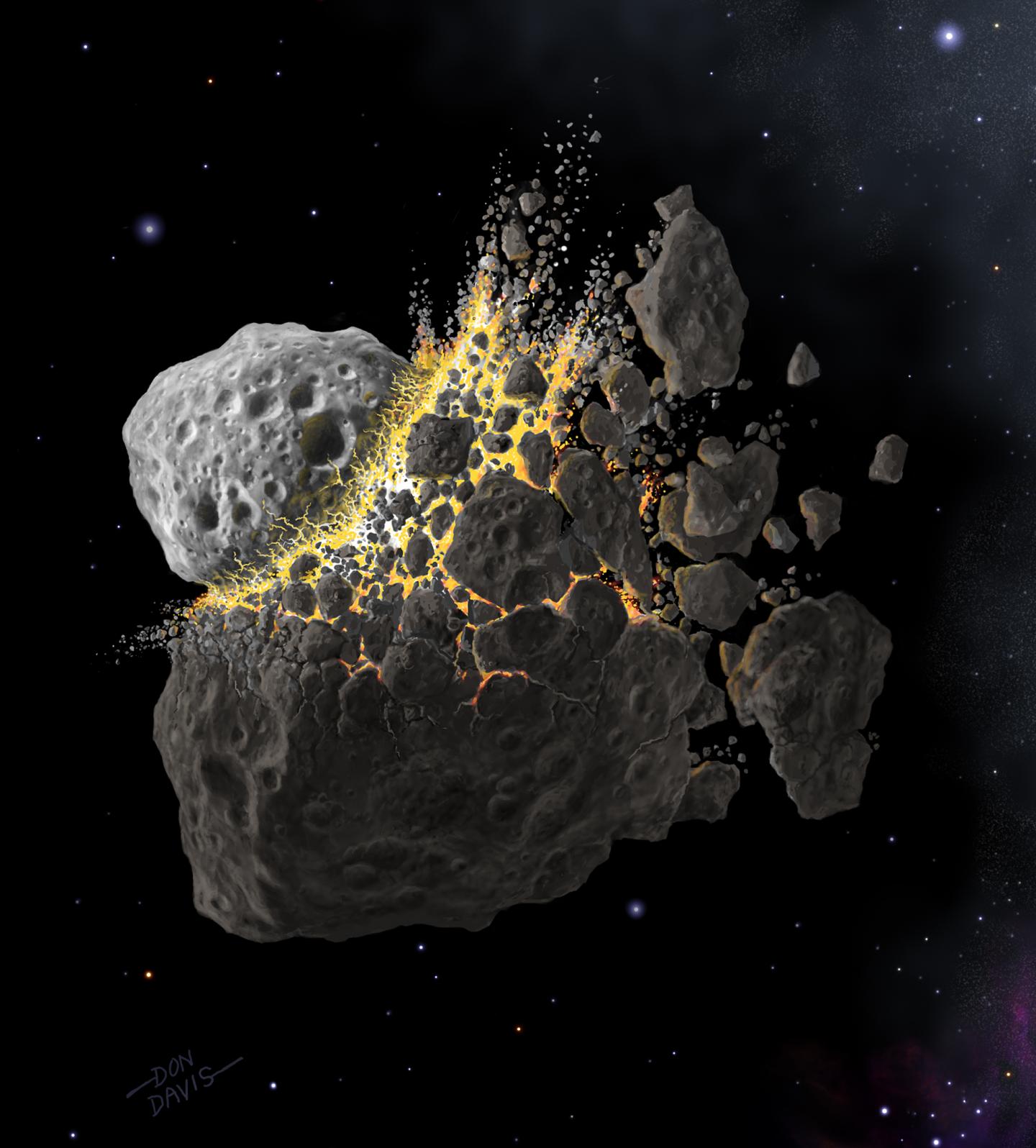Meteorites on Earth May Come from Just a Handful of Early Lost Worlds
Nearly every meteorite that falls onto Earth may ultimately come from a half dozen or so lost worlds that splintered apart soon after the birth of the solar system, a new study finds.
This finding could shed light on the nature of dangerous asteroids that might one day strike Earth, which might, in turn, reveal the best ways to deflect them.
Astronomers have discovered more than 400,000 asteroids in the main asteroid belt between Mars and Jupiter, the new study's researchers told Space.com. The main source of the meteorites that strike Earth is the inner main belt, which holds about one-third of the belt's asteroids, they noted. [The Asteroid Belt Explained: Space Rocks by the Millions (Infographic)]
Previous research discovered that many asteroids appear to have similar orbits and compositions, and that each "asteroid family" formed when a collision shattered a planet-size body into many fragments.
Until now, scientists had suggested that only about 44 percent of the asteroids in the inner main belt belonged to five asteroid families, each named after their largest body — Flora, Vesta, Nysa, Polana and Eulalia.
Now, researchers find that virtually all the asteroids in the inner main belt belong to either the five main families there, or to members of old scattered "ghost" families.
"We think the inner one-third of the asteroid belt comes from about six objects," study lead author Stanley Dermott, a theoretical astronomer at the University of Florida, Gainesville, told Space.com.
Get the Space.com Newsletter
Breaking space news, the latest updates on rocket launches, skywatching events and more!
Dermott and his colleagues analyzed asteroids in that region that weren't previously categorized into any asteroid families. They focused on features of their orbits such as how oval-shaped or eccentric they were, or how tilted or inclined they were with respect to the sun's equator.
The researchers found that about 85 percent of the asteroids in the inner main belt belonged to the five main asteroid families there. The remaining 15 or so percent also either belonged to these five families or, more likely, came from a few ghost families, they said.
These new findings cast light on the origins of most meteorites that hit Earth. "Scientists have these wonderful collections of meteorites, and they're all slightly different," Dermott said. "The big question was, 'Are these differences in the meteorites because they come from a large number of different objects, or because they come from a few objects that evolved over time?' We're saying these meteorites generally come from a small number of objects that were fairly large, hundreds of kilometers in diameter or more."

Future research can investigate the asteroids of the middle and outer main belt, Dermott said. "There were probably a comparable number of parent bodies for the middle and outer belt asteroids as there were for the inner belt ones," he said.
Dermott also wants to investigate how rocks leave the main belt "and become near-Earth asteroids and meteorites. Now that we know where objects in the inner belt come from, we can work on the dynamics of how they leave under the influence of the planets and of radiation over billions of years."
Near-Earth asteroids can potentially collide with Earth, with disastrous consequences. "By learning more about how the asteroids have evolved over time, that helps us learn what they are made of, and knowing what a near-Earth asteroid is made of is going to be of big help if we want to know how to deflect it," Dermott said.
The scientists detailed their findings online July 2 in the journal Nature Astronomy.
Follow Charles Q. Choi on Twitter @cqchoi. Follow us @Spacedotcom, Facebook and Google+. Original article on Space.com.
Join our Space Forums to keep talking space on the latest missions, night sky and more! And if you have a news tip, correction or comment, let us know at: community@space.com.

Charles Q. Choi is a contributing writer for Space.com and Live Science. He covers all things human origins and astronomy as well as physics, animals and general science topics. Charles has a Master of Arts degree from the University of Missouri-Columbia, School of Journalism and a Bachelor of Arts degree from the University of South Florida. Charles has visited every continent on Earth, drinking rancid yak butter tea in Lhasa, snorkeling with sea lions in the Galapagos and even climbing an iceberg in Antarctica. Visit him at http://www.sciwriter.us










